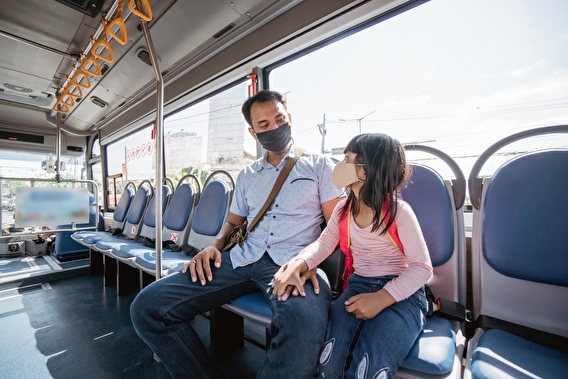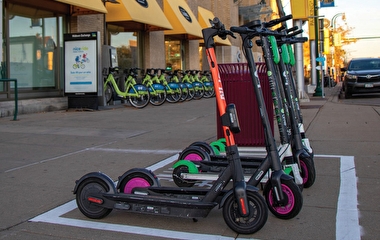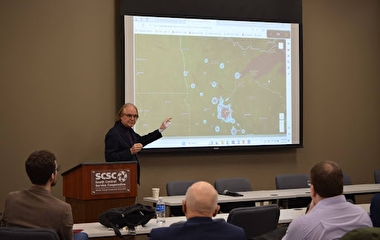
The COVID-19 pandemic took a major toll on public transit and shared transportation services in Minnesota, causing ridership and revenues to plummet. And it wasn’t just an urban problem: Smaller rural agencies and services saw sharp declines, too.
To remain viable, agencies need to recover lost customers—but how? In a recent study, U of M researchers asked Minnesotans about their concerns and preferences, then identified strategies to assure potential users that alternatives to driving alone are safe and effective. The study was led by Professor Yingling Fan of the Humphrey School of Public Affairs and sponsored by the Minnesota Department of Transportation (MnDOT).
Since the pandemic’s onset, Fan says, there has been limited research into how the public perceives risks surrounding infectious diseases and public transit, particularly outside of large urban areas. To begin its work, Fan’s team conducted a literature review and summarized findings from studies of several cities; this included a menu of “safety signals” that service providers can use to welcome back customers.
Next, the team conducted a survey of Minnesotans to understand their COVID-related safety concerns and their preferences and perceptions toward existing and potential safety protocols. The 15-minute survey, taken by more than 700 people in fall 2021, collected information about the participants’ demographics, the types of transportation they used, and their household’s COVID risks and vaccination status. It also asked about their risk perceptions for different transportation modes before and during the pandemic, preferred safety measures, and transit service improvements they would like to see.
Based on the survey, researchers were able to identify the most important aspects of transit and shared mobility services to existing or potential users. While many respondents indicated a strong interest in using public transportation and shared mobility, driving alone continued to be the most common transportation mode. The primary reasons for not using transit or shared mobility modes (in addition to having better alternatives) were lack of access and lack of interest.
COVID-related safety was a concern for potential transit users: More than 70 percent of respondents indicated some level of safety concern with public transportation. Groups with the highest levels of concern were women, people with increased infection risks in their households, and urban residents. Online shoppers also indicated heightened concerns. The most-preferred safety measures were frequent cleaning of transit vehicles and stops, along with increased air ventilation and filtration in transit vehicles.
Interestingly, service improvements were nearly as important as safety improvements for survey participants, making it an important strategy for increasing ridership. Offering more frequent and faster routes was the highest-ranked strategy, followed by real-time information about vehicles and routes.
Results of the survey were used to inform recommendations on safety and communications strategies that transit agencies and shared mobility services can use to promote the value and safety of shared transportation. To aid transportation agencies, researchers produced a decision-making matrix of improvements, identifying preferences—both overall and for key transit groups—along with cost estimates and timelines for implementation.
“We now have some good ideas and strategies to share with transit agencies considering changes or improvements to their service, including what’s important to certain populations so they can target communications and marketing regarding improved services,” says Elliott McFadden, program coordinator for MnDOT’s Greater Minnesota Shared Mobility Program.
Like McFadden, Fan stresses that the ability to target messaging is a key benefit of this research. “Our results can help agencies rebuild their clientele by identifying demographic groups that are more likely to use transit resources given certain safety or service improvements,” she says. “We also point out the potential barriers to transit use.”
Co-investigators for the study were Neil Linscheid, associate professor, and Xinyi Qian, director and state specialist, with UMN Extension, and Galen Ryan, research professional with the Humphrey School.
A second phase of this project is already underway; six rural transit agencies in western Minnesota will be field-testing contactless payment and trip-planning technology.
—Megan Tsai, contributing writer


